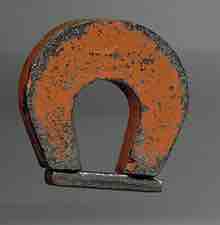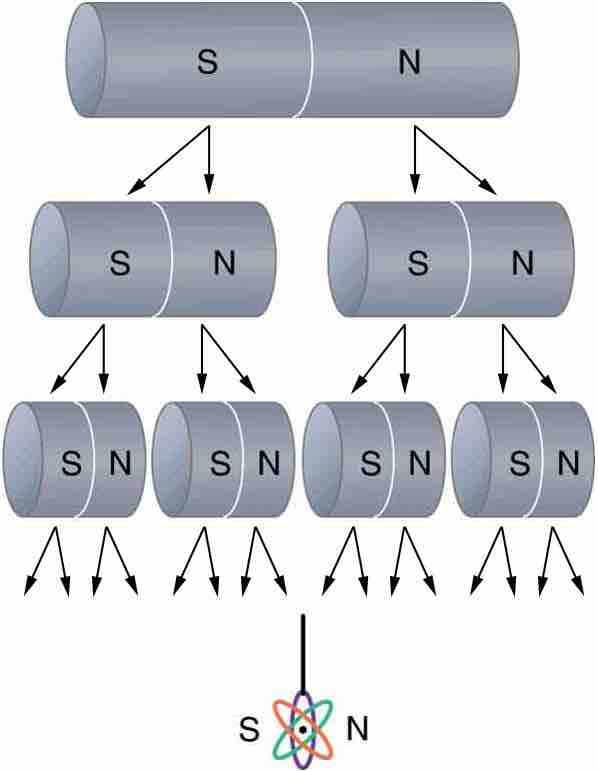Permanent Magnets
Overview
Recall that a magnet is a material or object that generates a magnetic field. This magnetic field is invisible but is responsible for the most notable property of a magnet: a force that pulls on other ferromagnetic materials, such as iron, and attracts or repels other magnets.
Types of Magnets
A permanent magnet is an object made from a material that is magnetized and creates its own persistent magnetic field . An everyday example is a refrigerator magnet used to hold notes on a refrigerator door. Materials that can be magnetized, which are also the ones that are strongly attracted to a magnet, are called ferromagnetic. These include iron, nickel, cobalt, some alloys of rare earth metals, and some naturally occurring minerals such as lodestone. Although ferromagnetic materials are the only ones attracted to a magnet strongly enough to be commonly considered magnetic, all other substances respond weakly to a magnetic field, by one of several other types of magnetism. The counterexample to a permanent magnet is an electromagnet, which only becomes magnetized when an electric current flows through it.

Example of a Permanent Magnet
An example of a permanent magnet: a "horseshoe magnet" made of alnico, an iron alloy. The magnet is made in the shape of a horseshoe to bring the two magnetic poles close to each other, to create a strong magnetic field there that can pick up heavy pieces of iron.
Polarity
All magnets have two poles, one called the north pole and one called the south pole . Like poles repel and unlike polls attract (in analogy to positive and negative charges in electrostatics). North and south poles always exist in pairs (there are no magnetic monopoles in nature), so if one were to split a permanent magnet in half, two smaller magnets would be created, each with a north pole and south pole.

North and South Poles Always Come in Pairs
North and south poles always occur in pairs. Attempts to separate them result in more pairs of poles. If we continue to split the magnet, we will eventually get down to an iron atom with a north pole and a south pole—these, too, cannot be separated.
Manufacturing Permanent Magnets
Ferromagnetic materials can be divided into magnetically "soft" materials like annealed iron, which can be magnetized but do not tend to stay magnetized, and magnetically "hard" materials, which do. Permanent magnets are made from "hard" ferromagnetic materials such as alcino and ferrite that are subjected to special processing in a powerful magnetic field during manufacture, to align their internal microcrystalline structure, making them very hard to demagnetize.
When a magnet is brought near a previously unmagnetized ferromagnetic material, it causes local magnetization of the material with unlike poles closest . (This results in the attraction of the previously unmagnetized material to the magnet. ) On the microscopic scale, there are regions in the unmagnetized ferromagnetic material that act like small bar magnets. In each region the poles of individual atoms are aligned. However, before magnetization these regions are small and randomly oriented throughout the unmagnetized ferromagnetic objects, so there is no net magnetic field. In response to an external magnetic field like the one applied in the above figure, these regions grow and become aligned. This arrangement can become permanent when the ferromagnetic material is heated and then cooled.

Making a Ferromagnet
An unmagnetized piece of iron is placed between two magnets, heated, and then cooled, or simply tapped when cold. The iron becomes a permanent magnet with the poles aligned as shown: its south pole is adjacent to the north pole of the original magnet, and its north pole is adjacent to the south pole of the original magnet. Note that there are attractive forces between the magnets.